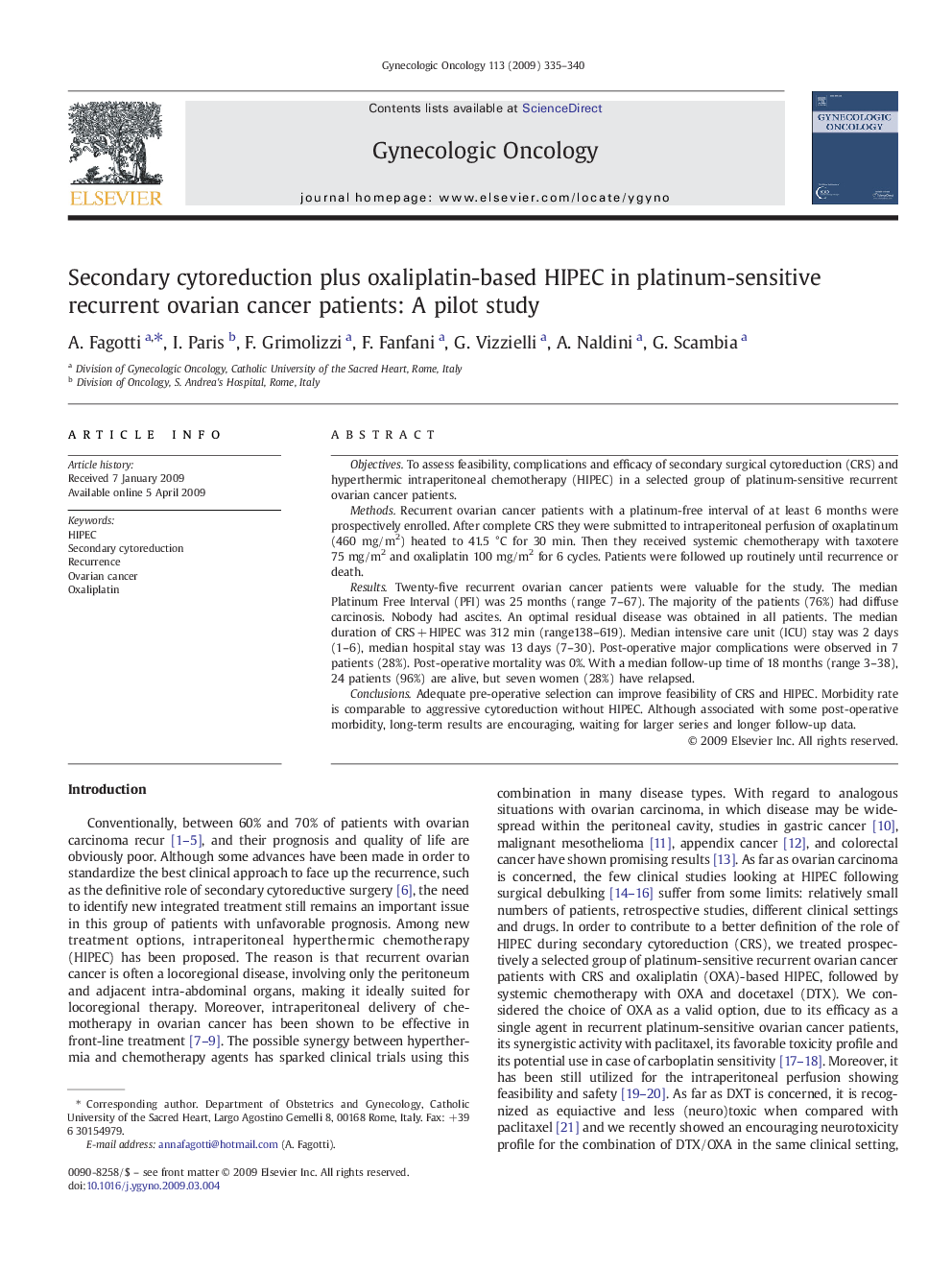| Article ID | Journal | Published Year | Pages | File Type |
|---|---|---|---|---|
| 3945887 | Gynecologic Oncology | 2009 | 6 Pages |
ObjectivesTo assess feasibility, complications and efficacy of secondary surgical cytoreduction (CRS) and hyperthermic intraperitoneal chemotherapy (HIPEC) in a selected group of platinum-sensitive recurrent ovarian cancer patients.MethodsRecurrent ovarian cancer patients with a platinum-free interval of at least 6 months were prospectively enrolled. After complete CRS they were submitted to intraperitoneal perfusion of oxaplatinum (460 mg/m2) heated to 41.5 °C for 30 min. Then they received systemic chemotherapy with taxotere 75 mg/m2 and oxaliplatin 100 mg/m2 for 6 cycles. Patients were followed up routinely until recurrence or death.ResultsTwenty-five recurrent ovarian cancer patients were valuable for the study. The median Platinum Free Interval (PFI) was 25 months (range 7–67). The majority of the patients (76%) had diffuse carcinosis. Nobody had ascites. An optimal residual disease was obtained in all patients. The median duration of CRS + HIPEC was 312 min (range138–619). Median intensive care unit (ICU) stay was 2 days (1–6), median hospital stay was 13 days (7–30). Post-operative major complications were observed in 7 patients (28%). Post-operative mortality was 0%. With a median follow-up time of 18 months (range 3–38), 24 patients (96%) are alive, but seven women (28%) have relapsed.ConclusionsAdequate pre-operative selection can improve feasibility of CRS and HIPEC. Morbidity rate is comparable to aggressive cytoreduction without HIPEC. Although associated with some post-operative morbidity, long-term results are encouraging, waiting for larger series and longer follow-up data.
